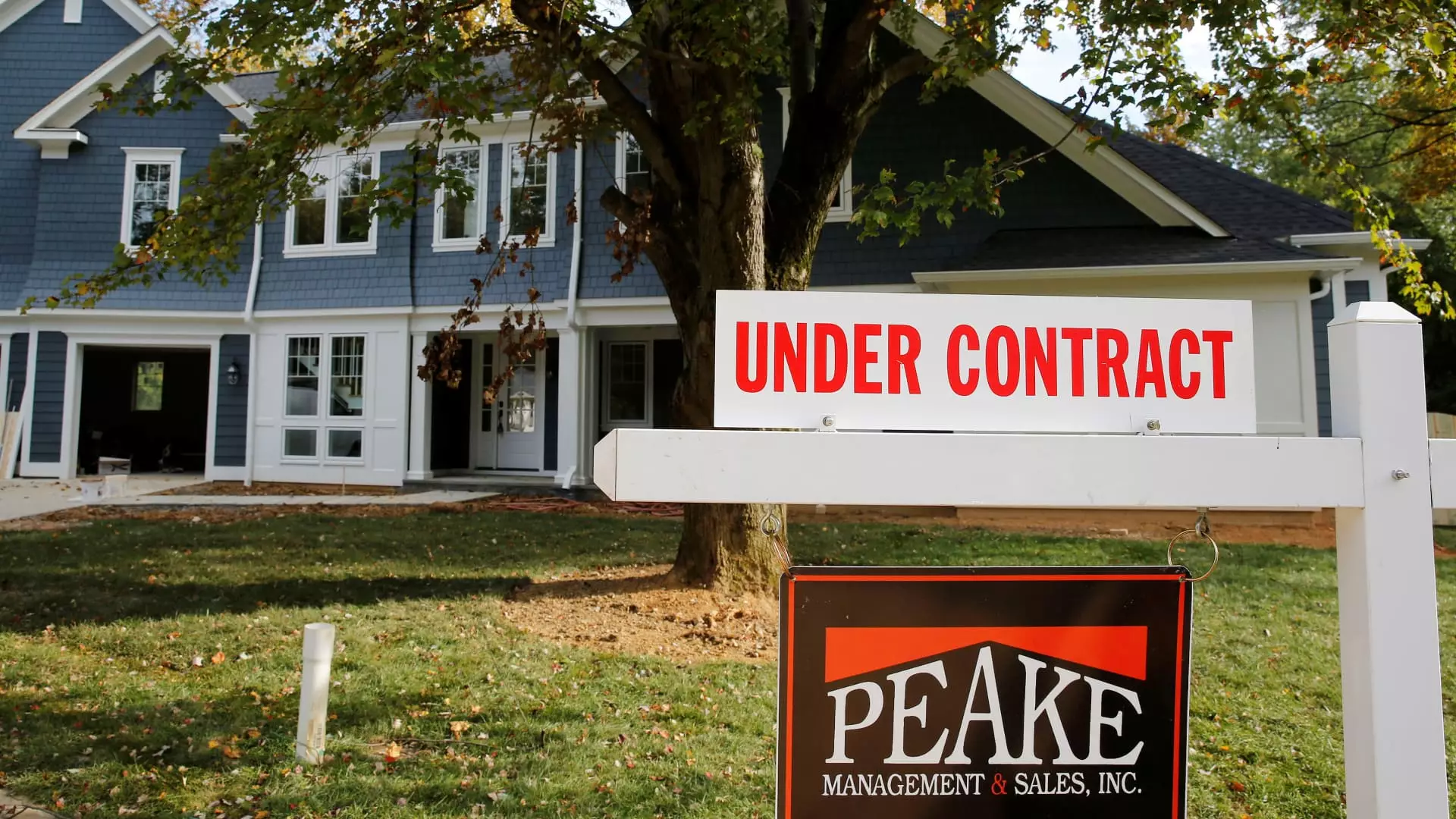The U.S. housing market has shown unexpected vitality with a notable increase in signed contracts for existing homes. In September, the National Association of Realtors reported a significant 7.4% rise in pending sales compared to August, a sharp contrast to analysts’ expectations of a mere 1% increase. This surge marks the highest level of pending sales since March and represents a 2.6% increase from the previous year’s figures. This surprising trend underscores the complexities and sensitivities surrounding buyer demand, particularly in relation to fluctuating mortgage rates.
The dynamics of buyer behavior are increasingly influenced by mortgage rates. Throughout August, the average rate for a 30-year fixed mortgage trended downwards, dipping to 6.11% by September 11. This decrease likely incentivized buyers, contributing to the marked rise in pending sales. However, with the rates rising back above 7% in October, the potential for reverse momentum looms large. Economic indicators suggest that while buyers were momentarily encouraged by lower rates and increased inventory in late summer, the ongoing volatility of mortgage rates remains a critical factor that may dissuade future purchases.
Analyzing the regional data reveals intriguing patterns. The West experienced the most substantial gains in pending sales, which is particularly noteworthy given that high home prices in this region make it acutely sensitive to changes in mortgage rates. The Northeast and West recorded year-over-year increases, while the Midwest and South showed more muted activity. The uneven distribution of buyer interest across regions illustrates the diverse economic landscapes influencing real estate dynamics, highlighting a potential short-term rebound driven by localized affordability challenges.
Experts emphasize a cautious outlook on the longevity of this recent uptick in pending sales. Selma Hepp, chief economist at CoreLogic, expressed concerns that the return of rates to approximately 7% could curtail any momentum gained in the latter part of 2023. Furthermore, while the Mortgage Bankers Association reported a 10% uptick in mortgage demand compared to the same week last year, it is crucial to note that overall demand remains historically low. This situation poses significant questions about the sustainability of current trends, especially as buyers face renewed affordability challenges due to upcoming rate hikes.
The unexpected rise in pending home sales presents an intriguing but complex picture of the current housing market. The interplay between mortgage rates, regional performance, and buyer sentiment suggests that while momentary gains may be evident, the path ahead is fraught with uncertainties. Stakeholders, from real estate professionals to prospective buyers, must navigate this evolving landscape with an awareness of the potential volatility inherent in the housing market. Future sales figures may hinge heavily on economic conditions, employment rates, and the ability of mortgage rates to stabilize at levels that encourage sustained buyer activity.

